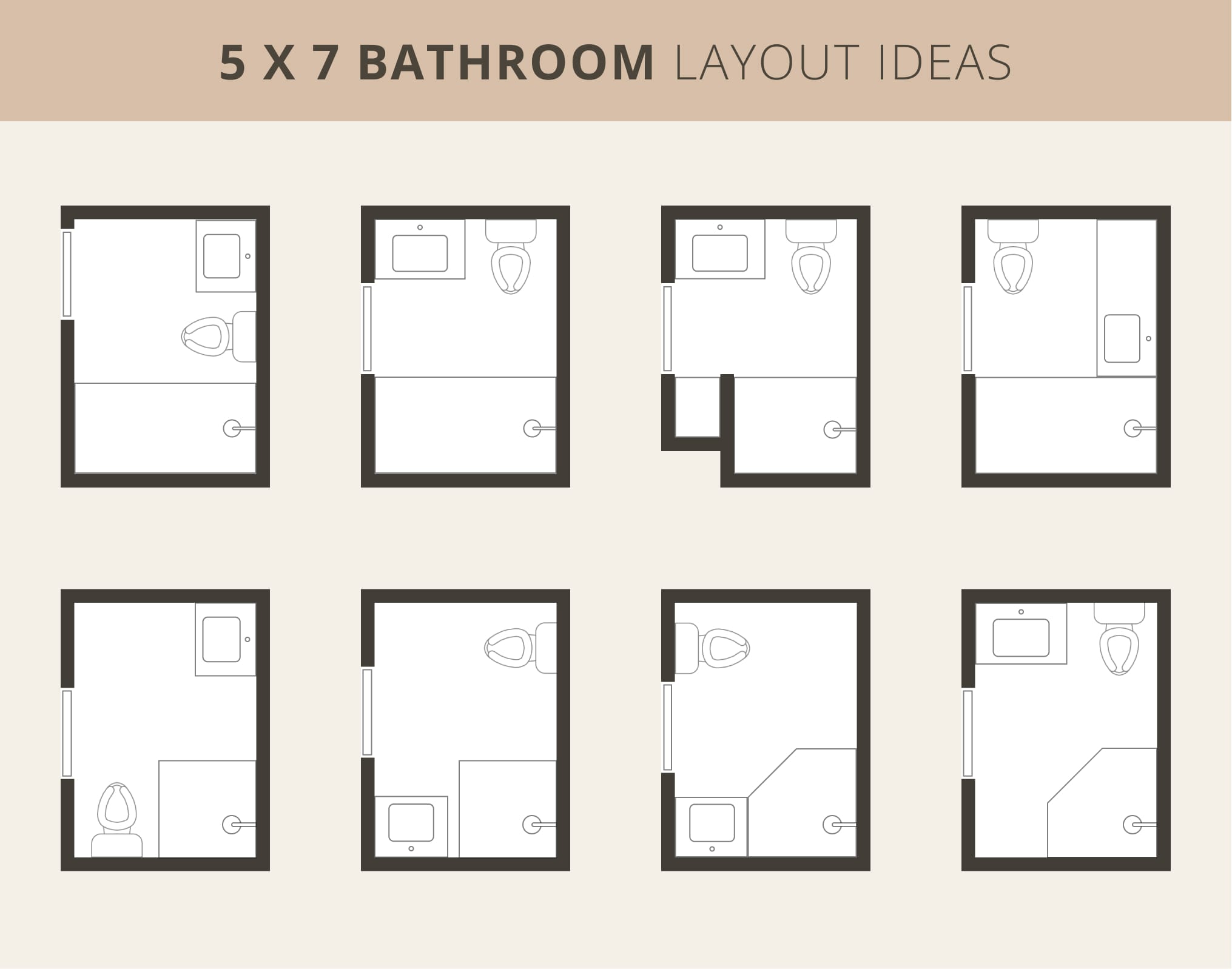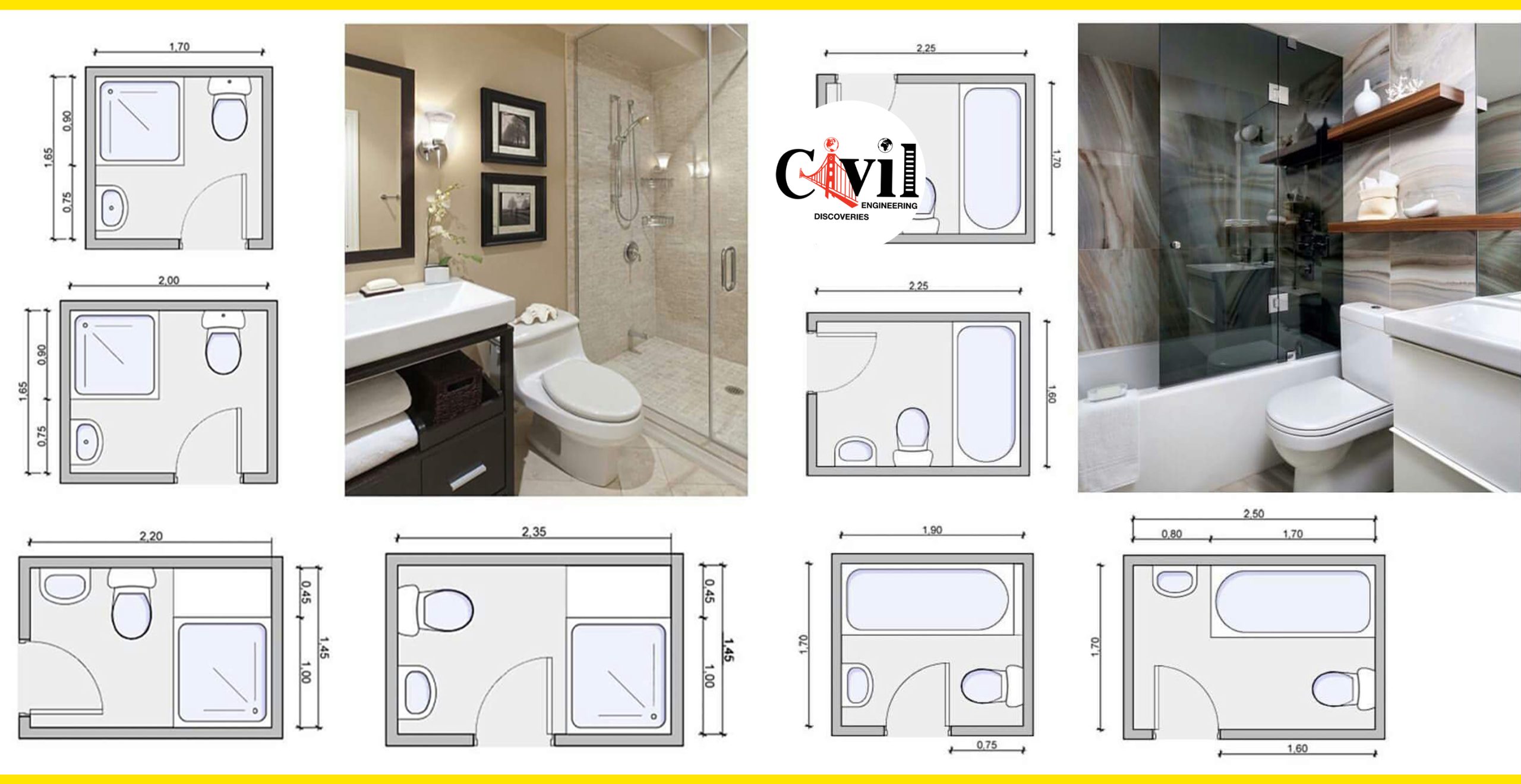Space-Saving Solutions: Smallest Ada Bathroom Layout With Shower

Creating an ADA-compliant bathroom layout in a small space requires thoughtful planning and creative design solutions. This section will delve into various space-saving techniques, comparing and contrasting their benefits and drawbacks, and highlighting the importance of maximizing vertical space.
Space-Saving Techniques
The following table compares and contrasts different space-saving techniques for ADA-compliant bathroom layouts with showers:
| Technique | Benefits | Drawbacks |
|—|—|—|
| Corner Showers |
- Maximizes floor space by utilizing a corner area.
- Provides ample showering space within a smaller footprint.
- Offers flexibility in design and size options.
|
- May require custom construction or modifications.
- Can limit the size of the shower depending on the corner space available.
|
| Walk-in Tubs |
- Offers a safe and accessible bathing experience for individuals with mobility limitations.
- Provides a relaxing and therapeutic soak.
- Can be designed with features like grab bars and adjustable seats.
|
- Typically takes up more space than a shower.
- Can be more expensive than a traditional bathtub or shower.
|
| Wet Room Designs |
- Creates a seamless and spacious feel by eliminating traditional shower enclosures.
- Offers flexibility in layout and design.
- Can be customized with various finishes and materials.
|
- Requires careful planning and waterproofing to prevent water damage.
- May not be suitable for all bathroom layouts or budgets.
|
Maximizing Vertical Space
Maximizing vertical space is crucial in small bathrooms. Tall cabinets, wall-mounted shelves, and under-sink storage offer practical and stylish solutions for organizing toiletries, towels, and other bathroom essentials.
For instance, a tall, narrow cabinet can provide ample storage space without taking up valuable floor area. Wall-mounted shelves can be installed at different heights to accommodate various items, while under-sink storage maximizes the space beneath the vanity.
By utilizing vertical space efficiently, you can create a functional and aesthetically pleasing small bathroom that meets the needs of all users.
ADA-Compliant Design Elements

Creating an ADA-compliant bathroom requires careful consideration of design elements that ensure accessibility and safety for individuals with disabilities. These features are crucial for promoting independence and ease of use.
Essential ADA-Compliant Features
The following features are essential for creating an ADA-compliant bathroom with a shower:
- Grab Bars: Grab bars provide crucial support for stability and balance, particularly when entering and exiting the shower or using the toilet. They should be installed in strategic locations, such as near the toilet, shower entrance, and within the shower itself. ADA guidelines specify minimum diameter, placement, and strength requirements for grab bars.
- Shower Seats: A shower seat is essential for individuals who have difficulty standing for extended periods. It should be securely mounted, provide adequate support, and be positioned in a way that allows for easy access and transfer from a wheelchair. The seat should be made of a non-slip material and be at a comfortable height for the user.
- Non-Slip Flooring: A slip-resistant floor surface is crucial for preventing falls. The coefficient of friction (COF) of the flooring material should meet ADA standards to ensure adequate grip. Common options include textured tiles, rubber mats, and specialized non-slip coatings.
- Adjustable Showerheads: An adjustable showerhead allows users to customize the water flow and direction, accommodating different heights and physical limitations. Handheld showerheads offer greater flexibility and control for individuals who may have difficulty reaching a fixed showerhead.
Clearance and Maneuvering Space, Smallest ada bathroom layout with shower
Adequate clearance and maneuvering space are essential for wheelchair users to navigate the bathroom safely and comfortably. ADA guidelines specify minimum widths for doorways, turning radii, and maneuvering space around fixtures.
- Doorway Width: The minimum clear doorway width for wheelchair accessibility is 32 inches (81 cm). This allows for easy wheelchair access and maneuvering within the bathroom.
- Turning Radius: A minimum turning radius of 60 inches (152 cm) is required to allow wheelchair users to turn comfortably within the bathroom. This space is crucial for safe and efficient movement.
- Maneuvering Space: Sufficient space should be provided around fixtures like the toilet, sink, and shower to allow wheelchair users to approach and use them without obstruction. This includes a minimum clearance of 30 inches (76 cm) in front of the toilet and sink, and a minimum of 36 inches (91 cm) in front of the shower entrance.
Shower Door Options
The choice of shower door can significantly impact accessibility and usability in an ADA-compliant bathroom. Here’s a comparison of different shower door options and their suitability for ADA-compliant layouts:
| Type | Advantages | Disadvantages | ADA Suitability |
|---|---|---|---|
| Sliding Doors | Space-saving, easy to operate | Can be difficult to clean, may require a larger opening for wheelchair access | Moderately suitable, particularly if the opening is wide enough for wheelchair access |
| Hinged Doors | Wide opening, easy to clean | May require more space for swinging, can be difficult for some to open | Less suitable for wheelchair users due to potential swing space and potential for obstruction |
| Walk-In Shower Enclosures | No doors, easy access, large open space | May be more expensive, requires careful water management to prevent flooding | Highly suitable for wheelchair users, providing unrestricted access and maneuverability |
Creating a Functional and Accessible Layout

Designing a small ADA-compliant bathroom with a shower requires careful consideration of layout, fixtures, and accessibility features. A well-planned layout ensures ease of movement, access to all amenities, and a safe and comfortable experience for users with disabilities.
Optimizing Space and Functionality
The key to creating a functional and accessible small bathroom is to maximize space and optimize the layout.
- Prioritize a clear path of travel. Ensure a minimum 36-inch wide clear path throughout the bathroom, including around the toilet, sink, and shower. This allows for wheelchair access and maneuverability.
- Locate fixtures strategically. The toilet should be positioned to allow for easy transfer from a wheelchair. A grab bar should be installed on the wall next to the toilet for support. The sink should be positioned at a comfortable height, with ample knee clearance.
- Utilize space-saving solutions. Consider a corner shower to maximize floor space. Wall-mounted toilets and sinks save valuable floor space.
Illustrative Layouts
- Layout 1: Linear Design
A linear design is a simple and practical option for small bathrooms. The toilet, sink, and shower are positioned along one wall, with a clear path of travel in front of them. - Layout 2: L-Shaped Design
An L-shaped design is another space-efficient option. The toilet and sink are placed on one wall, while the shower is positioned on the adjacent wall. This layout allows for a slightly wider clear path of travel. - Layout 3: Corner Shower Design
A corner shower design is ideal for maximizing floor space in a small bathroom. The shower is positioned in the corner, freeing up space for other fixtures.
Common Design Mistakes to Avoid
- Insufficient clear path of travel. This can make it difficult for wheelchair users to maneuver.
- Inadequate knee clearance. This can make it uncomfortable for users in wheelchairs to access the sink.
- Poorly placed grab bars. Grab bars should be strategically positioned to provide support and stability.
- Lack of accessible storage. Accessible storage solutions, such as pull-out drawers and shelves, are essential for users with limited mobility.
Smallest ada bathroom layout with shower – Designing a small ADA-compliant bathroom with a shower requires careful consideration of space optimization. While functionality is paramount, the choice of materials can greatly enhance the overall aesthetic. For the bathroom vanity, selecting the right finish is crucial to achieving a cohesive look.
Explore the best finish for your bathroom vanity to complement the minimalist design of your ADA-compliant bathroom.
Designing a small ADA-compliant bathroom with a shower can be challenging, but it’s possible to create a functional and stylish space. With limited square footage, you’ll need to prioritize accessibility features like grab bars and a roll-in shower. To keep the bathroom sparkling clean and safe for everyone, consider using a best non toxic bathroom cleaner that’s gentle on surfaces and won’t irritate sensitive skin.
A well-planned ADA bathroom layout with a shower can be a haven of comfort and convenience.